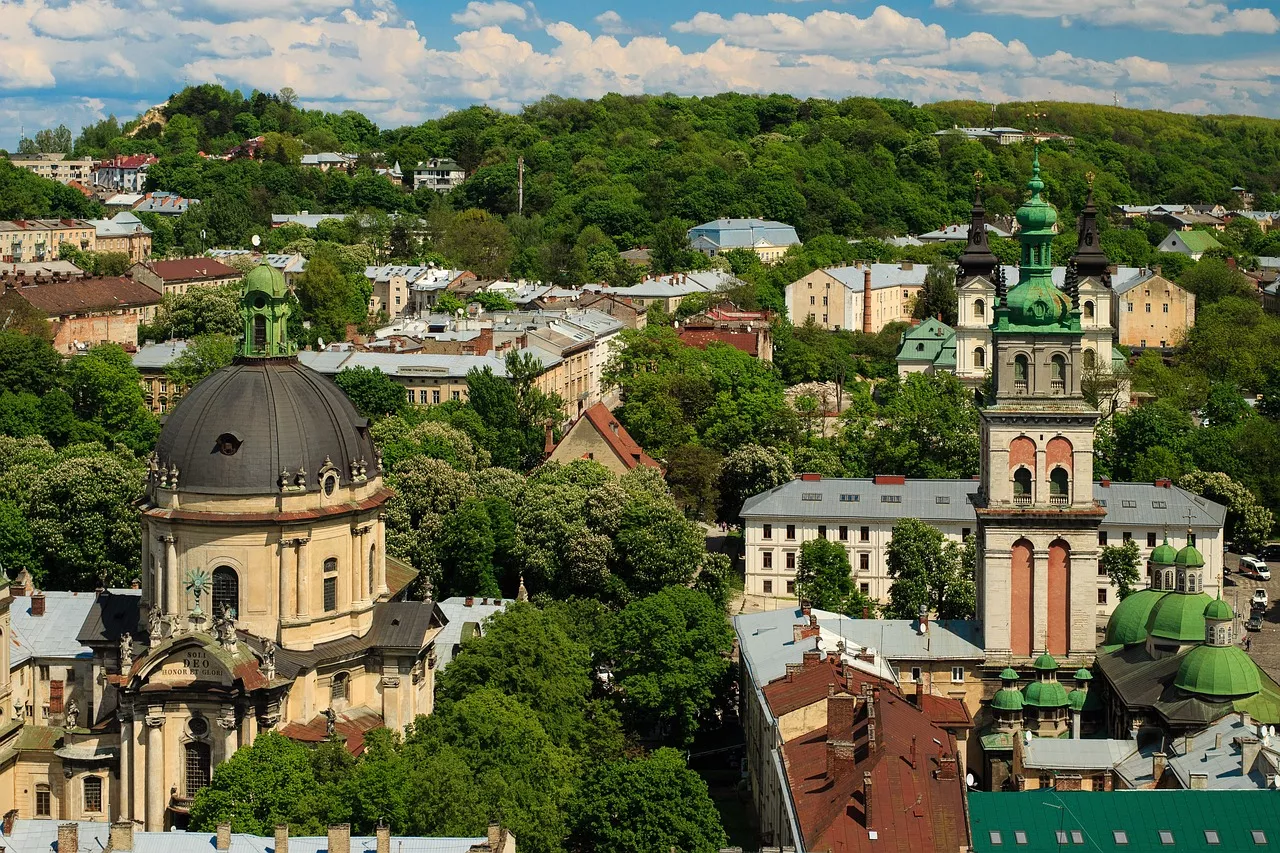Traditional dishes from Poland
Polish cuisine is renowned for its hearty and comforting dishes that are sure to satisfy even the most discerning palate. One of the most iconic dishes is pierogi, which are dumplings filled with various ingredients like cheese, potato, sauerkraut, or meat. These little pockets of goodness are usually boiled or pan-fried and served with sour cream or melted butter. The combination of the soft dough and flavorful fillings make pierogi a true delight.
Another must-try dish is bigos, a traditional Polish stew made with sauerkraut, fresh cabbage, various meats such as pork or beef, and an array of spices. The long cooking process allows the flavors to meld together, resulting in a rich and deeply satisfying dish. Bigos is often enjoyed with a side of rye bread, which complements the flavors perfectly.
Poland is also known for its delectable pastries, such as paczki, which are deep-fried doughnuts filled with sweet fillings like jam or custard. These indulgent treats are traditionally enjoyed on Fat Thursday, a day before the start of Lent, and are a favorite among locals and visitors alike.
Regional specialties from Russia
Russian cuisine is as diverse as its vast landscape, with each region having its own unique specialties. One dish that is synonymous with Russian cuisine is borscht, a beetroot soup that is both hearty and flavorful. The vibrant red color of the soup is a feast for the eyes, and the combination of beets, cabbage, potatoes, and meat creates a delicious and satisfying meal. Borscht is often served with a dollop of sour cream and a sprinkle of fresh dill, adding a refreshing tang to the dish.
Another popular Russian dish is pelmeni, which are small dumplings filled with a mixture of ground meat, onions, and spices. These bite-sized treats are usually boiled or steamed and served with a side of sour cream or melted butter. Pelmeni are a staple in Russian households and are often enjoyed during festive occasions or as a comforting meal on a cold winter day.
No exploration of Russian cuisine would be complete without trying blini, thin pancakes that are similar to crepes. These versatile pancakes can be enjoyed with both sweet and savory fillings, such as caviar, smoked salmon, sour cream, or jam. Blini are a popular dish during Maslenitsa, a traditional Russian festival that celebrates the end of winter and the beginning of spring.
Exploring the flavors of Hungary
Hungarian cuisine is known for its robust flavors and generous use of spices. One of the most famous Hungarian dishes is goulash, a hearty stew made with tender chunks of meat, onions, paprika, and other seasonings. The slow cooking process allows the flavors to develop and meld together, resulting in a rich and flavorful dish. Goulash is often served with a side of noodles or crusty bread, which are perfect for soaking up the delicious sauce.
Another iconic Hungarian dish is langos, a deep-fried flatbread that is typically topped with garlic, sour cream, and grated cheese. This indulgent street food is a favorite among locals and visitors alike, and is often enjoyed as a snack or a late-night treat.
Hungary is also known for its delicious pastries, such as chimney cake. This sweet and doughy treat is made by wrapping dough around a cylindrical spit, then baking it over an open fire. The result is a crispy and caramelized exterior with a soft and fluffy interior. Chimney cake can be enjoyed plain or filled with various sweet fillings like Nutella, ice cream, or fruit preserves.
Traditional cuisine from Romania
Romanian cuisine is a reflection of the country's rich history and diverse cultural influences. One dish that stands out is sarmale, which are cabbage rolls filled with a mixture of ground meat, rice, and spices. These flavorful rolls are usually stewed in a tomato-based sauce and served with a side of polenta, creating a hearty and satisfying meal.
Another traditional Romanian dish is mici, also known as "skinless sausages." These small and flavorful sausages are made from a mixture of ground meat (usually a combination of pork, beef, and lamb), garlic, and spices. Mici are typically grilled and served with mustard, bread, and pickles, creating a delicious and satisfying meal.
Romania is also famous for its sweet treats, such as cozonac, a rich and sweet bread that is typically baked during festive occasions like Easter. Cozonac is made with a dough enriched with butter, eggs, and sugar, then filled with a mixture of nuts, cocoa, or fruit preserves. The result is a soft and sweet bread that is perfect for breakfast or as a dessert.
Delightful dishes from Ukraine
Ukrainian cuisine is known for its hearty and comforting dishes that are perfect for cold winter days. One dish that is a staple in Ukrainian households is borscht, a beetroot soup that is packed with flavors and nutrients. The combination of beets, cabbage, potatoes, and meat creates a hearty and satisfying soup that is often enjoyed with a dollop of sour cream and a sprinkle of fresh dill.
Another popular Ukrainian dish is varenyky, which are dumplings filled with various ingredients like potato, cheese, cabbage, or meat. These dumplings are usually boiled or steamed and can be served as a main course or as a side dish. Varenyky are often enjoyed with melted butter or sour cream, adding a creamy and indulgent touch to the dish.
Ukraine is also famous for its delicious pastries, such as pampushky, which are sweet yeast rolls that are typically filled with garlic butter and served with borscht. The combination of the soft and fluffy rolls with the savory garlic butter creates a delightful contrast of flavors that is sure to please your taste buds.
Lesser-known culinary gems from the Balkan region
The Balkan region is home to a variety of lesser-known culinary gems that are waiting to be discovered. One such dish is cevapi, which are small grilled sausages made from a mixture of ground meat (usually a combination of beef, lamb, and pork), onions, and spices. These flavorful sausages are often served with flatbread, chopped onions, and a side of ajvar, a savory red pepper spread.
Another delicious Balkan dish is burek, a flaky pastry filled with ingredients like cheese, meat, or spinach. Burek is typically enjoyed as a breakfast or a snack and is a popular street food in the region. The combination of the crispy pastry and the flavorful fillings creates a satisfying and indulgent treat.
Balkan cuisine is also known for its variety of grilled meats, such as pljeskavica, a large and juicy burger made from a mixture of ground meat, onions, and spices. Pljeskavica is often served with a side of bread, kajmak (a type of clotted cream), and ajvar, creating a delicious and filling meal.
Popular desserts and pastries from Eastern Europe
Eastern Europe is home to a wide array of delectable desserts and pastries that are sure to satisfy your sweet tooth. One such dessert is medovik, a Russian honey cake that is made with layers of thin and crispy honey-infused cake and a creamy filling. The combination of the sweet and slightly tangy filling with the delicate cake layers creates a harmonious balance of flavors that is simply irresistible.
Another popular dessert is halva, a sweet confection made from ground sesame seeds or sunflower seeds, sugar, and various flavorings like nuts, chocolate, or dried fruits. Halva has a dense and crumbly texture and is often enjoyed as a snack or a dessert.
Eastern Europe is also famous for its pastries, such as kremna rezina, a Slovenian cream cake that consists of layers of puff pastry filled with vanilla custard cream and topped with whipped cream. This indulgent cake is a favorite among locals and visitors alike and is often enjoyed with a cup of coffee or tea.
Pairing Eastern European cuisine with local beverages
No culinary journey through Eastern Europe would be complete without exploring the local beverages that perfectly complement the flavors of the cuisine. One popular beverage is kvass, a fermented drink made from rye bread and flavored with various ingredients like fruits, herbs, or honey. Kvass has a slightly tangy and refreshing taste and is often enjoyed as a non-alcoholic alternative to beer.
Another iconic Eastern European beverage is rakia, a strong fruit brandy that is popular in countries like Bulgaria, Serbia, and Croatia. Rakia is made from fermented fruits like plums, grapes, or apricots and has a distinct fruity flavor and a high alcohol content. It is often enjoyed as an aperitif or as a digestive after a hearty meal.
Eastern Europe is also known for its rich tea traditions, with countries like Russia and Ukraine being famous for their samovars and traditional tea ceremonies. Tea is often enjoyed with a variety of accompaniments like honey, lemon, or jam, creating a delightful and comforting experience.
Conclusion: Embracing the rich and diverse flavors of Eastern Europe
Eastern Europe is a treasure trove of culinary delights, with each country offering its own unique flavors and specialties. From the hearty dishes of Poland to the robust flavors of Hungary, the traditional cuisine of Eastern Europe is a feast for the senses. Whether you're a food lover, a traveler, or simply curious about new gastronomic experiences, exploring the flavors of Eastern Europe will take you on an unforgettable journey. So, embrace the rich and diverse flavors of Eastern Europe and get ready to tantalize your taste buds with the captivating cuisine of this enchanting region.

 Exploring the Delights of Authentic French Pastries
Exploring the Delights of Authentic French Pastries Predicted Food Trends for 2023 and Beyond
Predicted Food Trends for 2023 and Beyond



